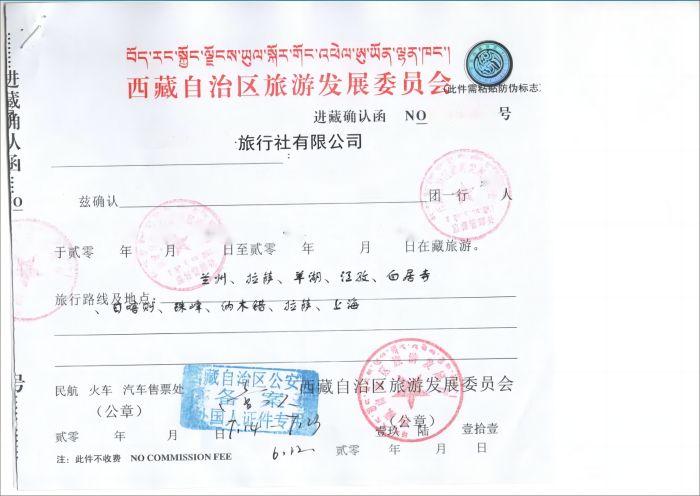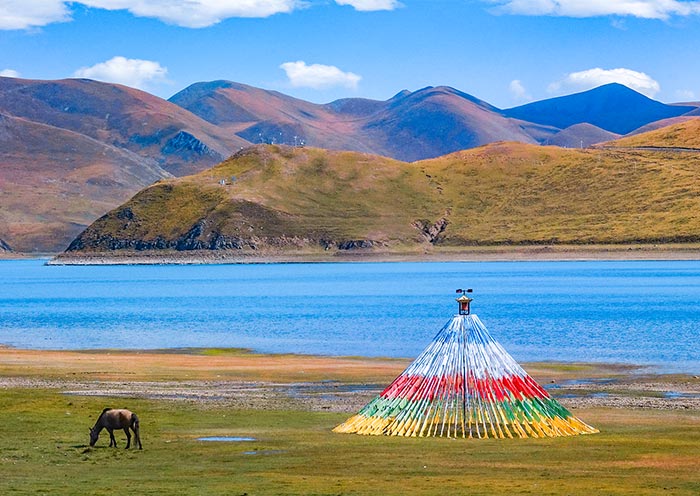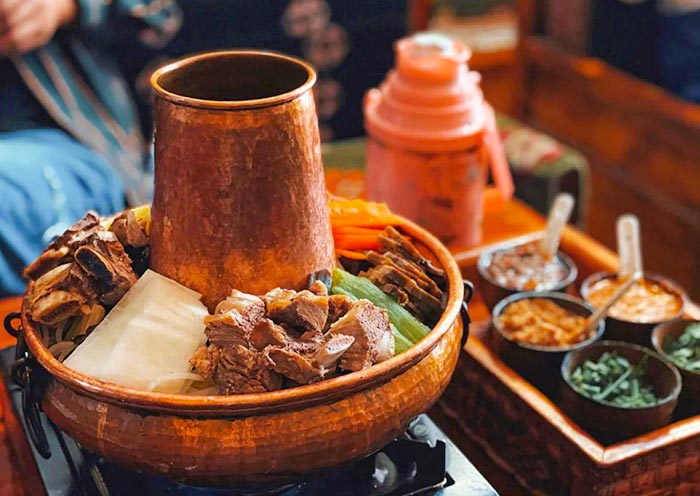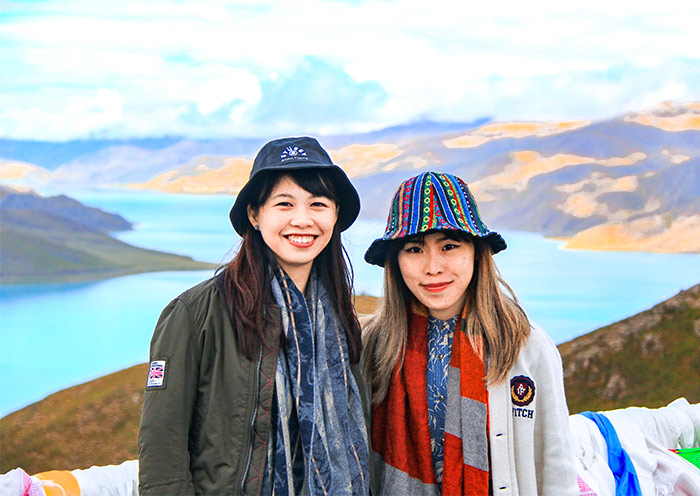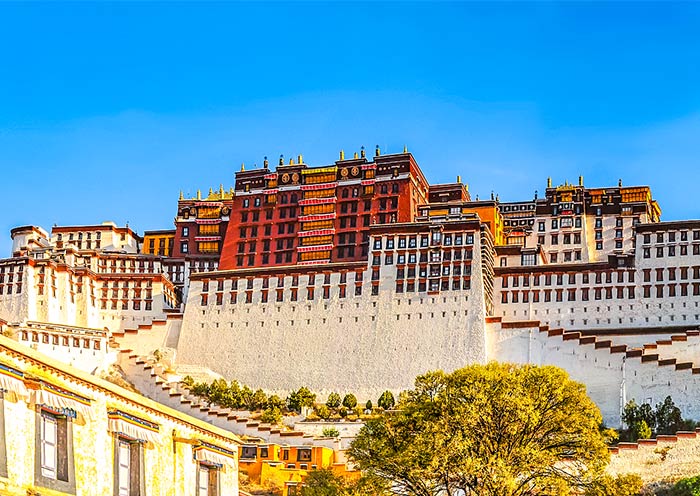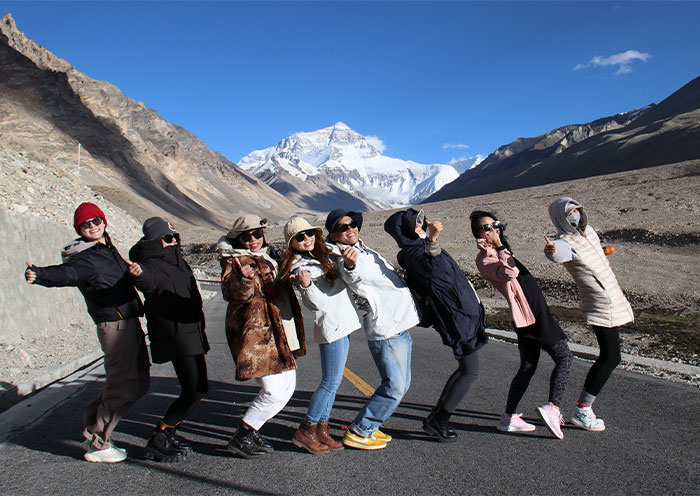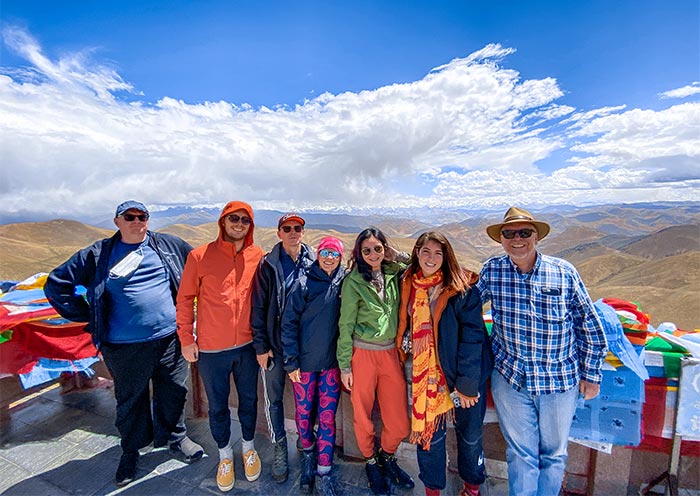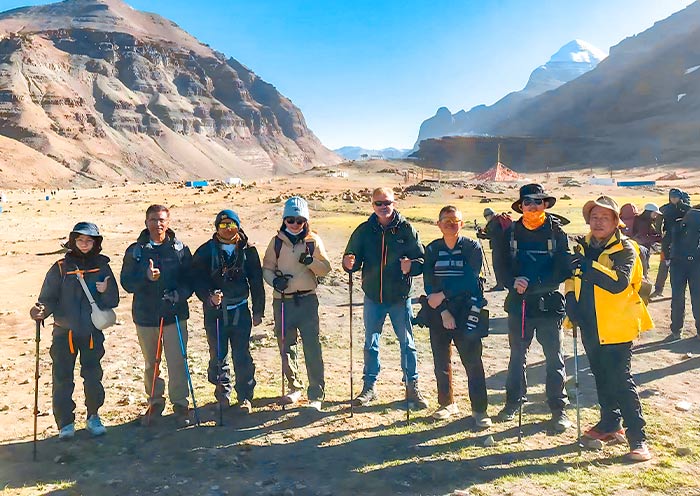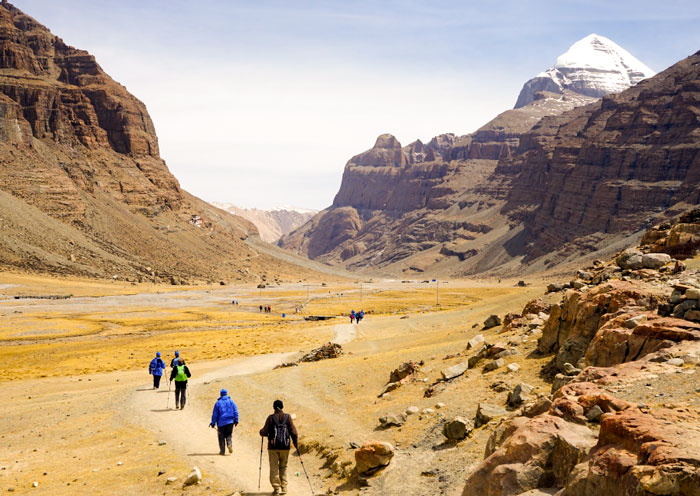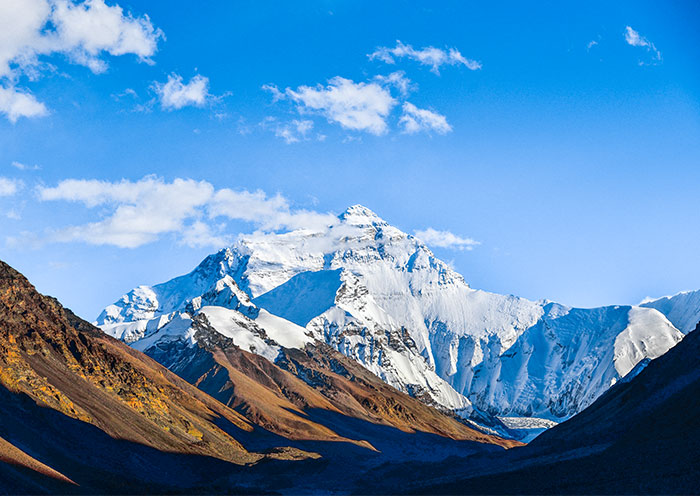#1. Mount Kailash Location in Xizang (Tibet) is Far from Lhasa
Mount Kailash is located in the western Ali region of the Tibet Autonomous Region, approximately 1200 kilometers from Lhasa by road. Direct road routes and flights are available to reach Mount Kailash from Lhasa. Alternatively, you can first take a train from Lhasa to Shigatse and then travel by road to Mount Kailash. It's important to note that for foreign visitors, certain permits such as the Tibet Travel Permit are required regardless of the method of travel to Mount Kailash.
Check more details about Tibet Travel Permits.
#2. Mount Kailash is Unclimbable and No One has Climbed to the Peak
Despite its relatively modest elevation of 6714 meters, Mount Kailash has never been successfully summited. Reportedly, a Russian team attempted the ascent in 1999, only to face inexplicable circumstances, leading to its failure. Following this, climbing attempts on Mount Kailash were strictly prohibited. Now, tourists are restricted to observing the mountain from a distance or embarking on the pilgrimage circuit around it.
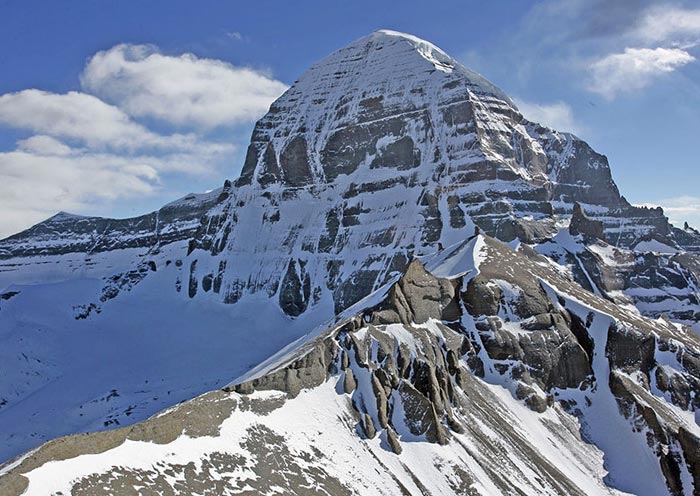
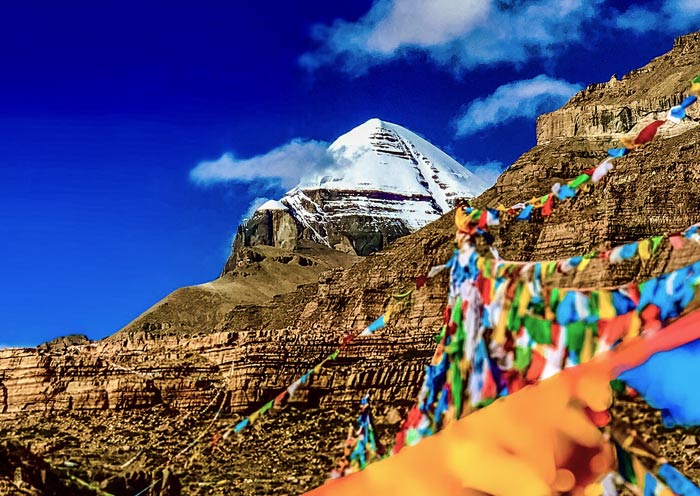
#3. Mount Kailash Height/Elevation is 6714 Meters
Although Mount Kailash, the principal peak of the Gangdise Mountains (冈底斯山脉), is not the highest in the region, it holds an unparalleled sacred status. Nestled between the Kunlun and Himalaya ranges, this peak stands at an elevation of 6714 meters. The town of Darchen, nestled at its base, is situated at an altitude of approximately 4500 meters, resulting in a modest vertical elevation difference of only 2100 meters.
#4. The Shape of Mount Kailash is like a Pyramid
The southern facade of Mount Kailash, constantly enveloped in snow, exhibits a full and rounded appearance with its peak bearing a resemblance to a pyramid. Contrarily, the northern face, shaped by centuries of glaciation, forms a concave cliff, akin to a spoon. Unsubstantiated rumors speculate that Mount Kailash might not be a natural formation but an enormous, man-made pyramid, possibly constructed by extraterrestrials. However, this conjecture lacks scientific validation and remains purely speculative.
#5. Mount Kailash is the Origin of Four Great Rivers
Mount Kailash, also known as the " Water Tower of Asia," is the source of four sacred rivers of Asia, each named after a different animal.
The Lion Spring River (狮泉河), flowing northwards, feeds into the Indus River (印度河) downstream. The Elephant Spring River (象泉河), flowing westwards, becomes the Sutlej River (萨特莱杰河) downstream. The Horse Spring River (马泉河), flowing eastwards, feeds into the Yarlung Tsangpo River (雅鲁藏布江), known as the Brahmaputra River (布拉玛普拉特河) in India. Lastly, the Peacock Spring River (孔雀河), flowing southwards, merges into the Ganges River (恒河) downstream.
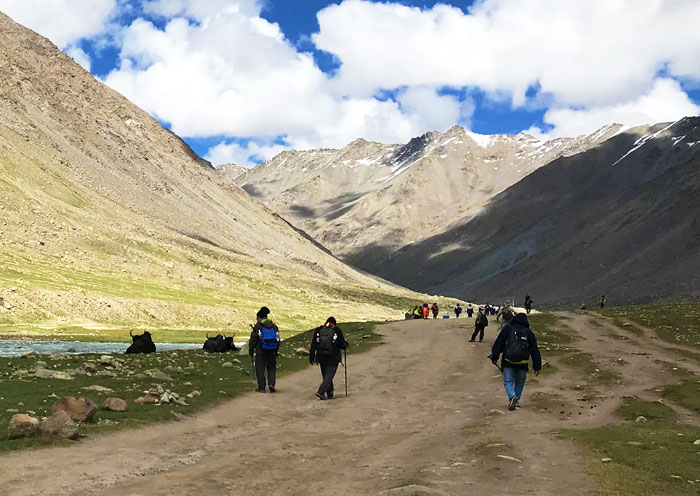
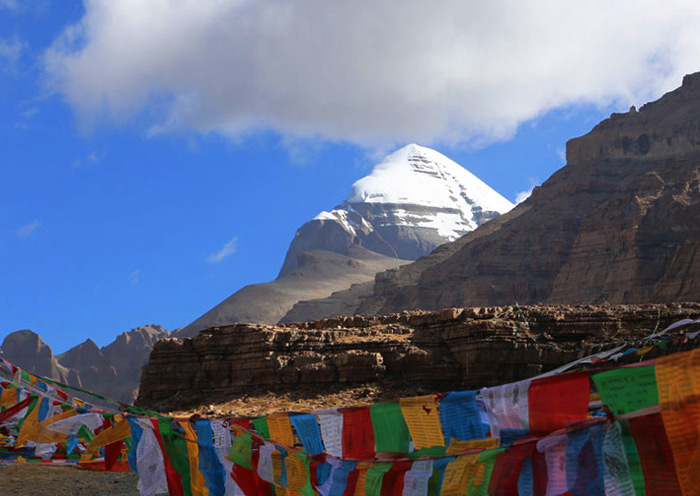
#6. Mount Kailash is a Sacred Mountain for Four Religions
Mount Kailash, known as Gang Rinpoche (冈仁波齐) in Tibetan, is a sacred mountain shared by four ancient religions: Bon, Hinduism, Jainism, and Buddhism, and it's considered the most important divine mountain in the Tibetan region.
Bon, the indigenous religion of Tibet, originated in the areas surrounding Mount Kailash, regarding Mt. Kailash as a ladder for the gods to descend to earth and ascend to heaven.
In Hinduism, it's revered as the dwelling place of Lord Shiva and his consort Parvati.
Jains regard it as the site where the first Jain Tirthankara, Rishabhanatha, attained liberation.
In Buddhism, Mount Kailash is identified as Mount Meru (须弥山), symbolizing the cosmological center of the universe.
#7. Mount Kailash is the Axis Mundi of the World
Mount Kailash is often referred to as the "center of the world." While it's revered as a spiritual center in multiple religious traditions, Mount Kailash also holds intriguing geographical significance.
In terms of geographical location, it is 6666 kilometers from Stonehenge in England, a distance that is the same as its distance to the North Pole. Additionally, the distance from Mount Kailash to the South Pole is 13332 kilometers, precisely twice the distance to the North Pole or Stonehenge.
Moreover, Mount Kailash lies on the extended line between the Pyramid of the Sun in Mexico and the Great Pyramid of Giza in Egypt. It is also located midway on the line connecting the mysterious Stonehenge and Easter Island. Most significantly, the intersection of these lines is at Mount Kailash itself.
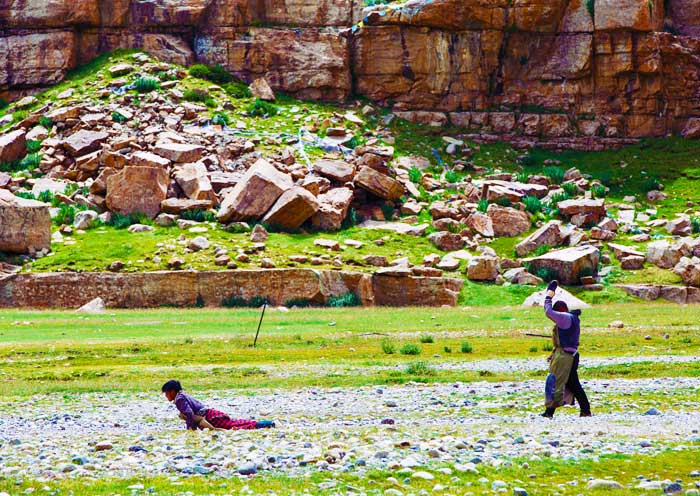
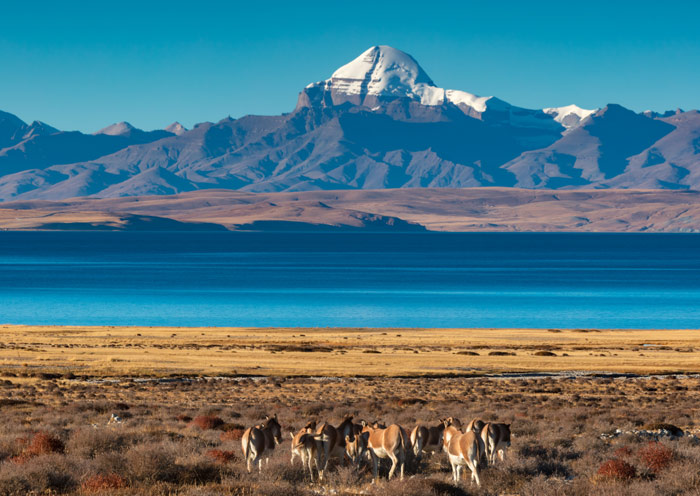
#8. There is a Mysterious Swastika Symbol and Obvious Ravine on the South Top of Mount Kailash
From the southern face of Mount Kailash, one can see the famous swastika symbol ("卐"), which is etched into the mountain by a combination of a large vertical ice channel and horizontal rock layers. In Buddhism, the swastika is a symbol of spiritual power, signifying the eternity of the Dharma and symbolizing auspiciousness and protection. As the legend goes, this mark is a relic from a spiritual contest between the followers of Buddhism and Bon on Mount Kailash.
#9. Kailash Mansarovar History is Full of Mysterious Story
The anecdotes you mentioned are part of the rich folklore and mystery that surround Mount Kailash, making it a fascinating and sacred destination for many.
Accelerated growth: Some trekkers around Mount Kailash have reported experiences of accelerated hair and nail growth, as if cell division was happening at a faster rate. While intriguing, such phenomena have not been scientifically substantiated.
The Qiemo or Kailash's "Yeti": The Yeti, often referred to as the "Abominable Snowman," is a creature of legend in the Himalayas. In the Kailash region, the local equivalent is known as Qiemo, meaning "savage" in Tibetan. Local herdsmen occasionally report finding strange footprints, which they attribute to this creature.
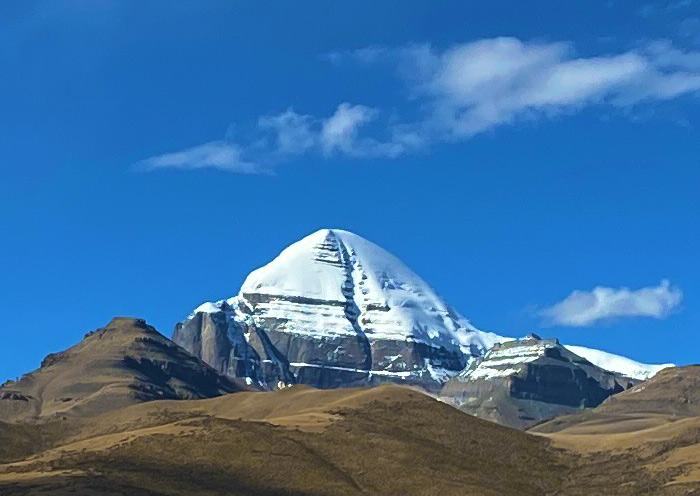
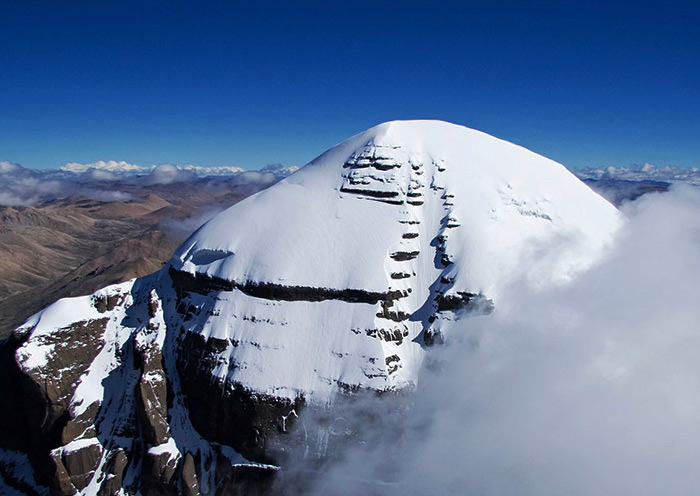
#10. Mount Kailash Kora is a Classical Pilgrimage Route
Mount Kailash Kora is one of the most well-known pilgrimage routes in the world. The term "Kora" refers to the act of circumambulating a sacred site in a clockwise direction, a common practice in Tibetan Buddhism.
The Kora around Mount Kailash is a 52-kilometer (about 32 miles) trek that begins and ends at the town of Darchen, located at the base of the mountain.
The trek is physically demanding due to the high altitude, rugged terrain, and harsh weather conditions. The highest point of the route is the Dolma La pass, which is approximately 5,610 meters (18,406 feet) above sea level. Despite the physical challenges, completing the Kora is considered a highly meritorious act.
Check more details about Mount Kailash Trek and Mount Kailash Kora Map>>
#11. There are 3 Mount Kailash Temples During the Mount Kailash Pilgrimage
During the Mount Kailash pilgrimage, there are several important religious sites and temples that pilgrims visit. While the specific sites can vary, three of the most significant ones include:
Chugu Monastery (曲古寺): It’s the first temple on the kora route. It is built on a high hillside and offers excellent views of Mt Kailash's southwest face, which looks most like a pyramid.
Dirapuk Monastery (止热寺): This monastery is one of the resting points along the Kora, located on the north side of Mount Kailash. From this point, pilgrims can see the north face of Mount Kailash.
Zutulpuk Monastery (尊珠寺): This monastery is another resting point along the Kora, located on the east side of Mt Kailash. It's known for its cave. Milarepa, a famous Tibetan yogi and poet, is said to have used his powers to overcome a local demon. The cave is believed to be the place where he meditated, and the monastery was built around it.
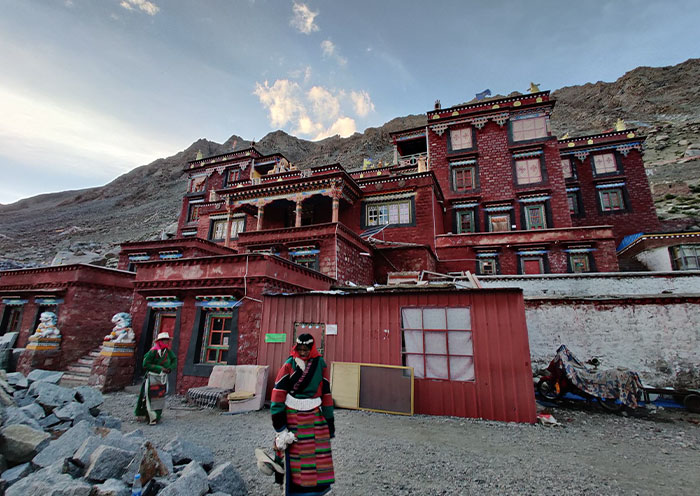
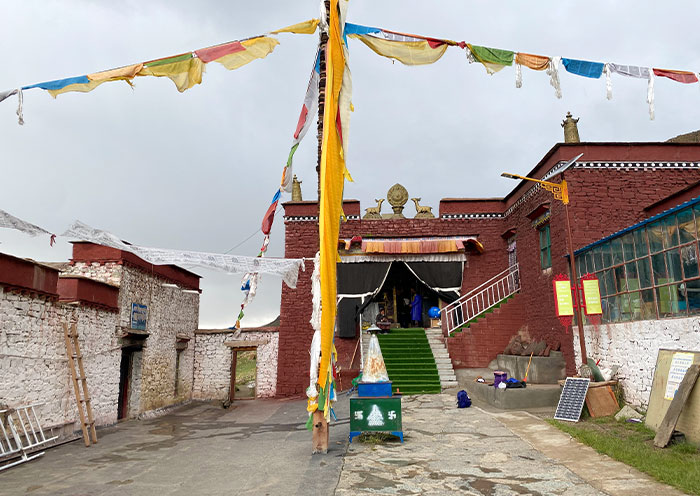
#12. Saga Dawa Festival is the Most Important Day for Mount Kailash
The Saga Dawa Festival is one of the most significant religious events associated with Mount Kailash. The festival is celebrated by Buddhists in Tibet to honor the life of the Buddha. The term "Saga Dawa" refers to the "fourth month" in Tibetan, as the festival is held on the 15th day of the fourth month of the Tibetan lunar calendar, which usually falls in May or June in the Gregorian calendar.
During this period, devotees commemorate Gautama Buddha through various practices such as prayer wheel turning, vegetarianism, and kora. The number of pilgrims and tourists visiting Mount Kailash to perform the Kora (circumambulation of the mountain) reaches its peak during this period.
How to Plan a Mount Kailash Tour from Lhasa?
Planning a tour to Mount Kailash from Lhasa involves several steps. Begin by choosing a reputable tour operator, as independent travel in Tibet is not permitted. The best time to visit is between May and October when the weather is favorable. The tour operator will assist you in obtaining the necessary travel and trekking permits. Given the 1,300km distance from Lhasa to Mount Kailash, plan for a 3-4 day overland journey, which also helps with altitude acclimatization. Pack appropriately for variable weather and basic accommodations. Lastly, respect the cultural and religious importance of the site, enhancing your understanding of its spiritual significance.
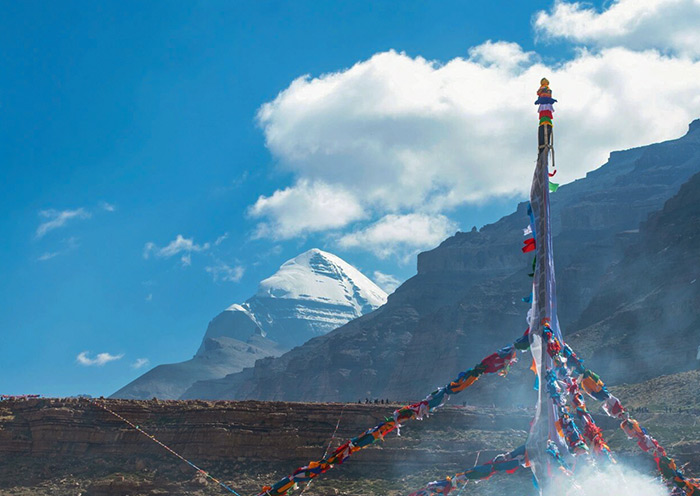
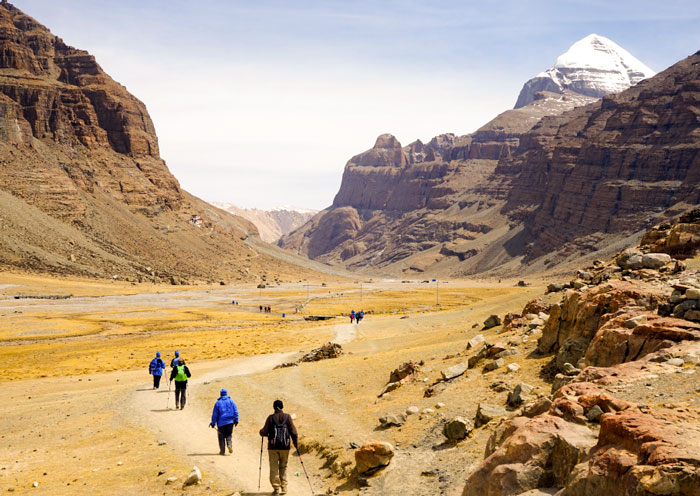
Explore Tibet with Asia Odyssey Travel
With over 10 years of local expertise in Lhasa and Tibet (Xizang), our dedicated team at Asia Odyssey Travel brings you carefully curated Tibet tours for an authentic and unforgettable experience.
Drawing upon our extensive experience, we have meticulously crafted a range of Tibet tour packages, including Lhasa tours, Mount Everest Tours, Mount Kailash Tours, Tibet Trekking Tours, Tibet Train Tours, and Tibet Overland Tours. Whether you prefer the comfort and flexibility of a private tour or the budget-friendly option of a group tour, we have you covered without compromising on quality.
Additionally, we cater to various travel preferences, whether you wish to commence your Tibet tour from one of the popular gateway cities in China, embark on Nepal Tibet tours, or even explore the mesmerizing Himalayan region. Whatever you desire, Asia Odyssey Travel has the perfect tour to meet your needs, ensuring that your expedition to Tibet (Xizang) becomes an unforgettable adventure.

